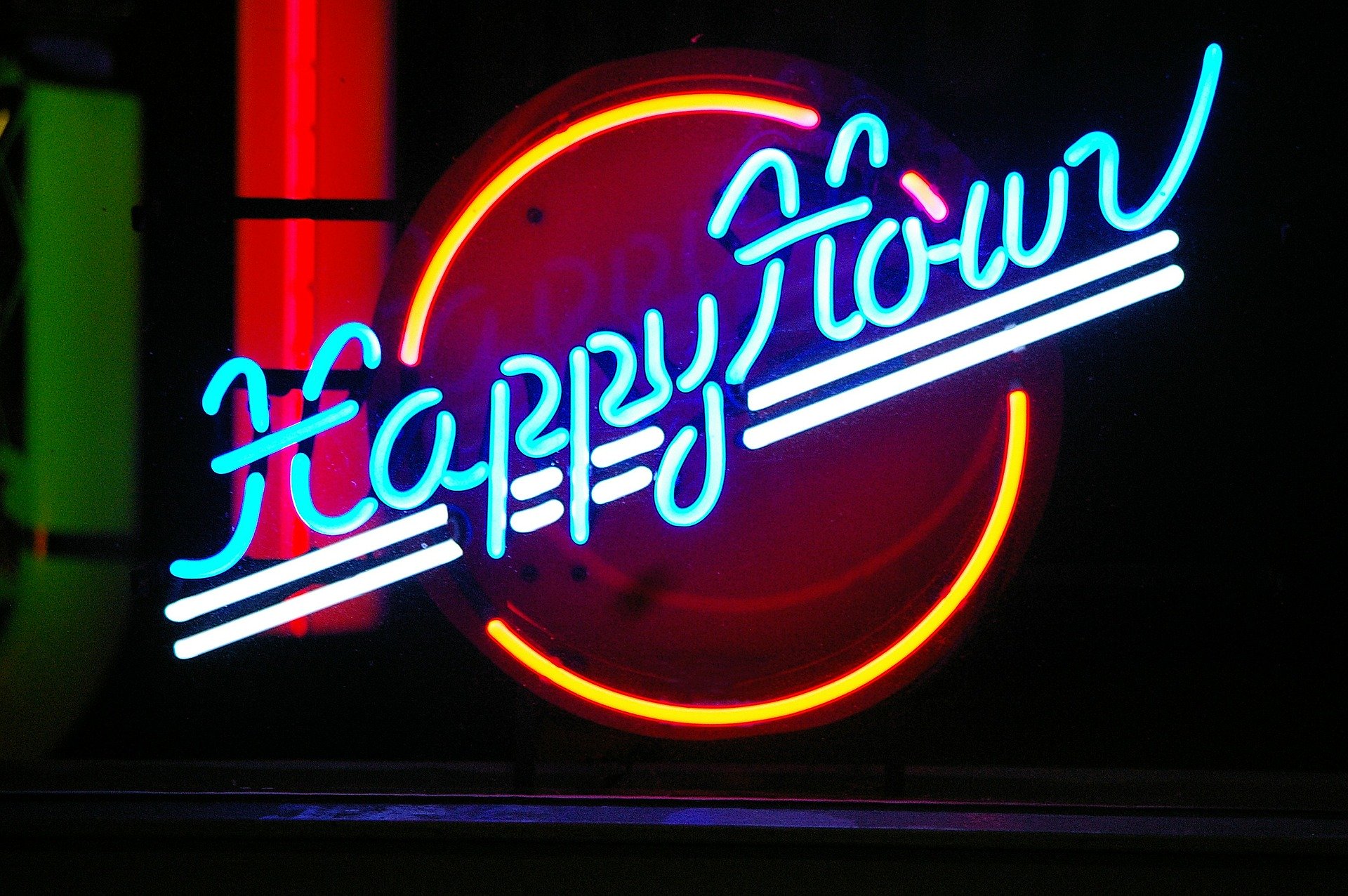
There’s going to be a “new normal” when the COVID-19 crisis abates. We don’t know when that will be or what adjustments we’ll need to make. But just about everyone acknowledge life will change on the other side of this outbreak.
And there’s no question that some of the changes will be good ones. We’re learning, for example, just how many people can effectively work out of their homes. We’re finding out that many doctor appointments don’t require tedious sitting around in a waiting room, when we can “visit” a physician, a counselor, and other professionals on a screen.
Yes, family reunions can be lovely events, but thanks to video chat platforms like Zoom or Skype, some of these meet-ups can be opened to more people virtually. Music stars are discovering a new intimacy, as more people can enjoy their talent in livestreams and other events. We may not bee able to attend concerts, but this is the next best thing. (In fact, it may prove to be a better thing.)
When stay-at-home effectively ends business as usual, innovators come up with clever replacements. And a question many radio programmers and sales managers are wondering about is how to replace bar nights? When bars, brew pubs, and clubs are closed, and people cannot mass gather anymore, how can one of the industry’s staples be reinvented during a global pandemic?
Welcome to video chat, and platforms like Zoom.
It’s what we’re calling “the new intimacy.”
It turns out Zoom is looking to be the big winner in video chat during COVID-19, thanks in large part to its ease of use, its free tier, and even anonymity – you don’t have to create an account to join a Zoom “meeting.” You just click into it.
There will be some brands that will emerge from the pandemic in better shape than they went in. Zoom is one of them. And the halo effect of video chat should carry over to the period when things return to some sense of normalcy.
The venture capital community calls this “hockey stick” growth:
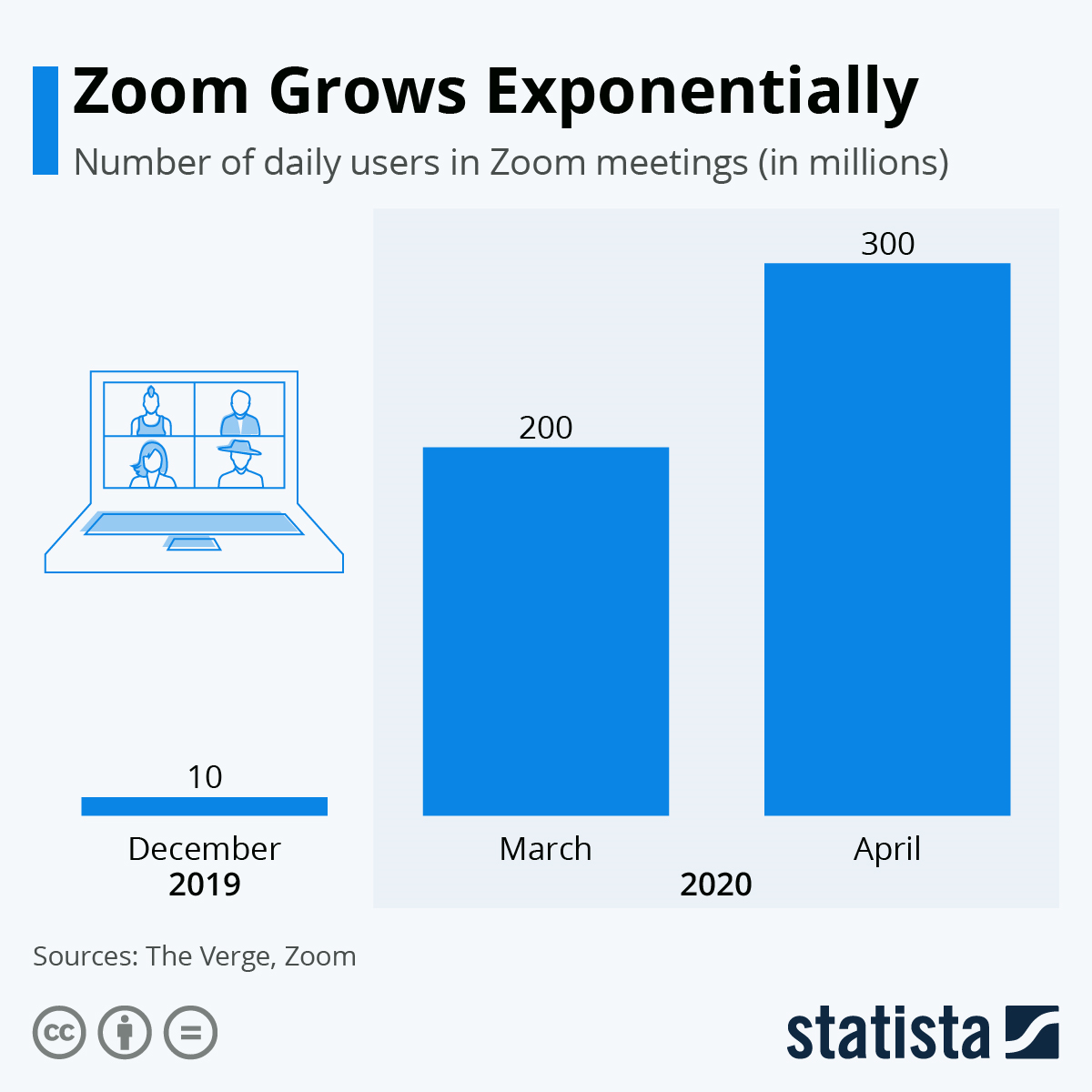
While Zoom has been around for 9 years, it’s business model turns out to be perfectly suited for a country bound by stay-at-home orders. Fast Company‘s Mark Wilson explains it well in “Why Everyone Your Know Is On Zoom.”
His claim that Zoom has become “the social medium of COVID-19″ rings very true, as every type of event – meetings, board games, coffee klatches, and even focus groups” have moved over to this highly social platform. And in the same breath, Wilson suggests Zoom “is even replacing bars” now that so many happy hours are taking place via video chat.
And in fact, a Doodle analysis of how video chat is being used by hundreds of millions of bored consumers around the globe is a sociological Petri dish of this moment in time Here’s the facts – March usage showed a nearly 300% increase of virtual happy hours – much higher than those using the technology for workouts or games:
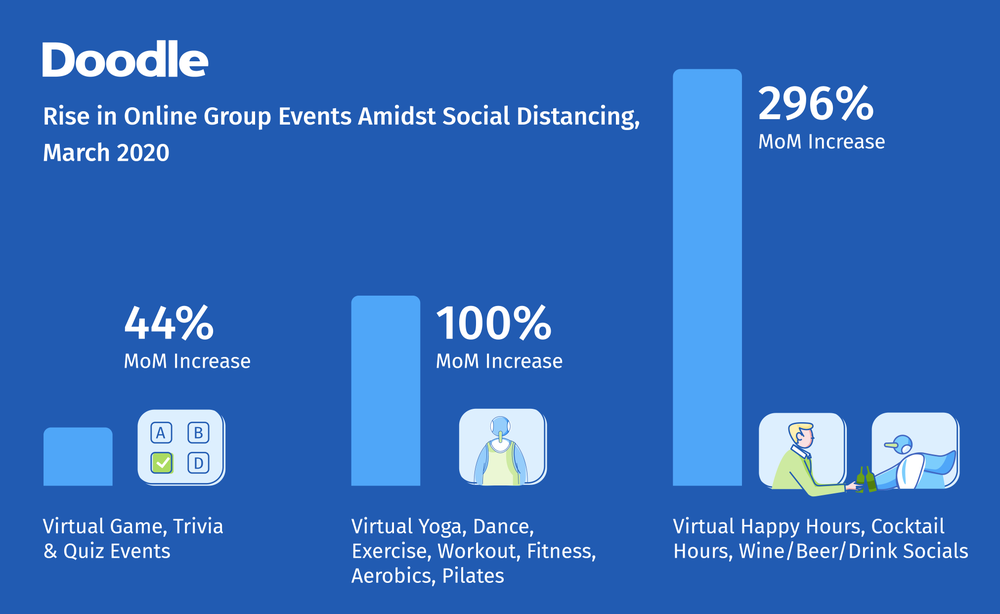
The platform is allowing more and more radio station personalities to make themselves more accessible to fans – in ways they certainly were not able to before. In L.A., KLOS‘ heritage morning show, Frosty, Heidi, & Frank has started hosting virtual “happy hours” on Fridays – and last week, ended up reaching more than 31,000 fans, while generating over 1,000 comments on Facebook Live – something that would not have been possible pre-COVID-19. And because it’s archived on the station’s website, this virtual event will net even more eyeballs as KLOS fans find it.
As KLOS PD Keith Cunningham told me, “It’s a big success – without a lot of promotion.” Nope, and these video events are something different that people want to be a part of. We get to see where the cast members live, their pets, an occasional family member, and other personal things we might never see during a normal radio show.
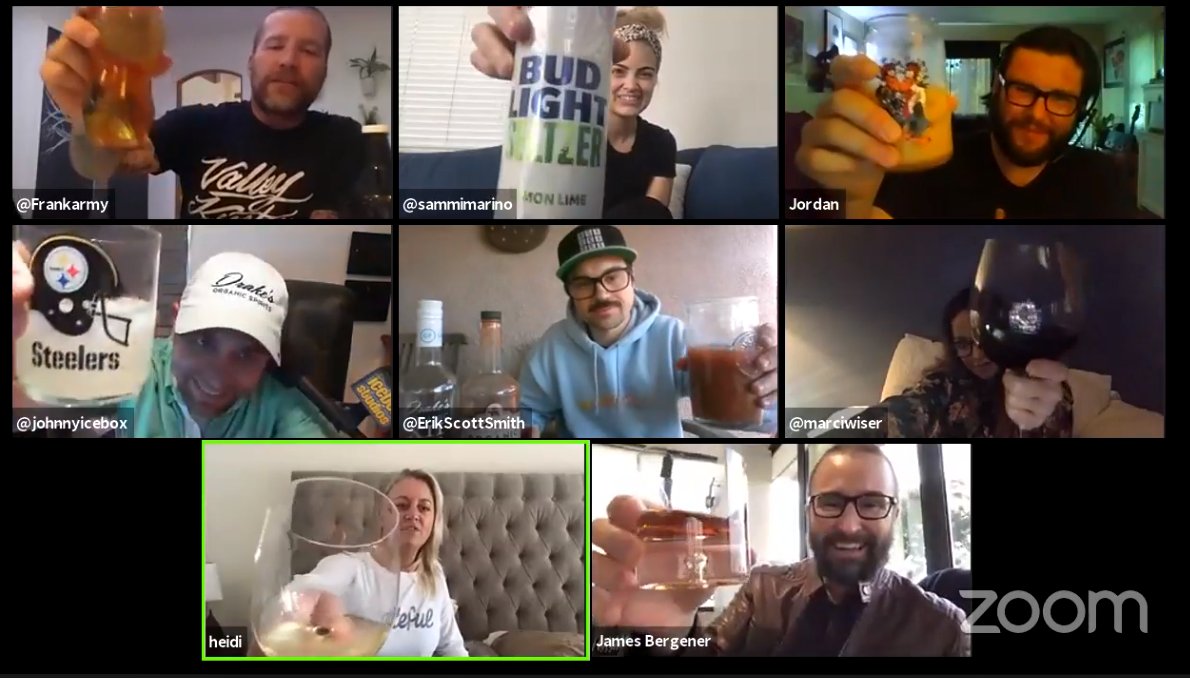
Now let’s do some back of the cocktail napkin math (appropriate, right?).
A Zoom business account comes to about $20 a month. And for that, you can create an entire event that includes hundreds of participants. And the chat box need to the screen lets thousands chatter away with each other, creating another social event.
Maybe the average bar night accounts for 100 attendees – on a good night, when the weather’s OK, and it’s a slow night for the bar anyway. These events require a station vehicle, a DJ appearance, cut-ins from the bar, and perhaps a handful of interns and/or street teamers. These usually don’t sound good on the air, and rarely are they FOMO events – because they’ve become perfunctory and routine. Oftentimes, fans whine because the station never seems to do these nights from their towns.
Enter Zoom and video chat, where crowd size can be many times the capacity of an average radio event in a bar or club, giving a station’s personalities a chance to hang out with more listeners in what counter-intuitively is a more intimate setting – without the dangers and downsides involved because of excessive consumption, the always precarious drive home, and other potential pitfalls. And unlike bar nights, these online events are open to anyone and everyone, no matter where you live, whether you have a car, or even if you love the DJs, but just don’t like to hang out in bars.
Plus, virtual happy hours present a much better return on investment than a bar night, especially in a metro with a big footprint like Los Angeles. And they provide a station with the opportunity to do product placement – a new marketing opportunity for the station tool box. If I’m an advertiser in L.A., I’d sure prefer sponsoring the next FHF Zoom Happy Hour, than spending the money on a three hour event on a Wednesday night in Redondo Beach.
Research clearly shows the audience has a voyeuristic interest in going behind the scenes. They’re dying to go backstage, into the locker room, and even the homes of their favorite personalities. Ironically, “MTV Cribs” debuted 20 years ago, a chance to see the rock star lifestyle. Its forerunner was “Lifestyles of the Rich and Famous” which got its start in the 80’s, hosted by one-time celebrity reporter Robin Leach. He took viewers “backstage” to see the mansions and lifestyle of the stars, those “champagne wishes and caviar dreams.”
These VIP Experiences have always been about access. And now, thanks to the hardships imposed by the virus and millions of people stuck at home staring at their screens, this “new intimacy” isn’t just possible – it’s happening every day, sometimes in “oh wow” ways.
For years, I have tried to urge, cajole, and even shame morning shows and their stations into installing cameras in the studio. Our research has clearly 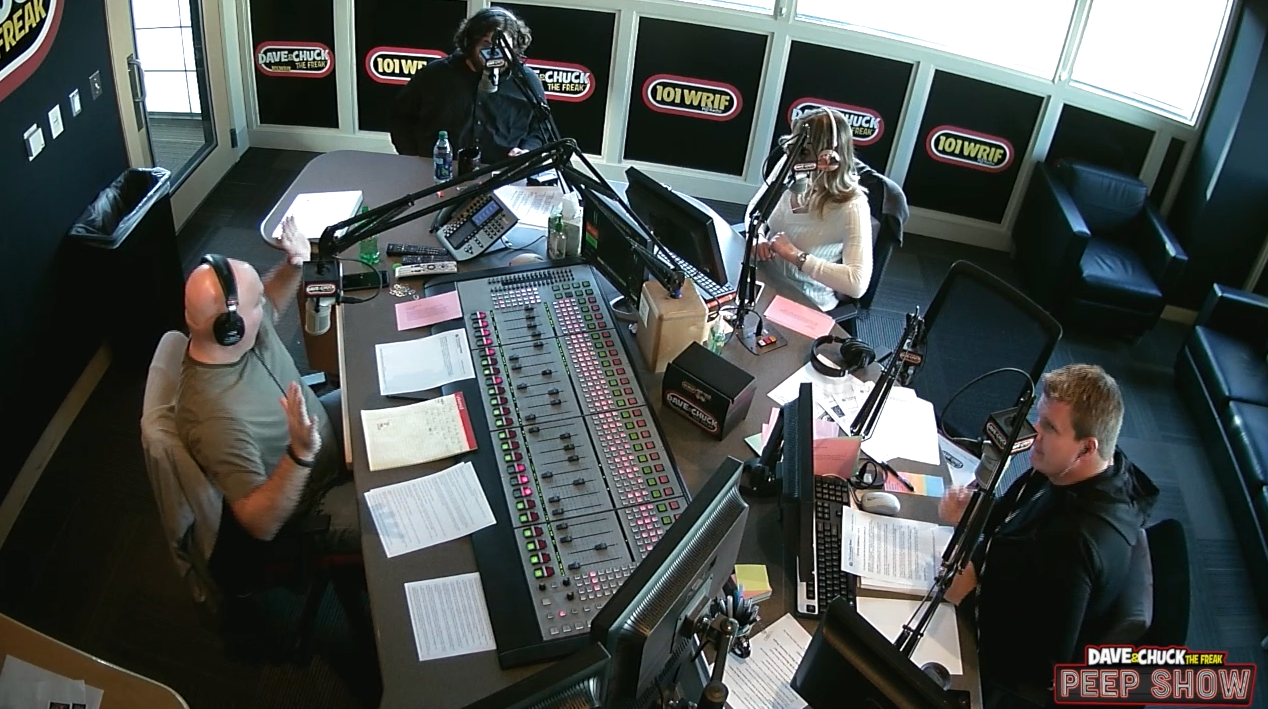 shown a voyeuristic interest in seeing behind-the-scenes, genuine looks at radio personalities doing their shows, screwing around during commercials, and hanging out in the jock lounge. Now, thanks to COVID-19 and platforms like Zoom, this is now a trend. And it’s growing by the day.
shown a voyeuristic interest in seeing behind-the-scenes, genuine looks at radio personalities doing their shows, screwing around during commercials, and hanging out in the jock lounge. Now, thanks to COVID-19 and platforms like Zoom, this is now a trend. And it’s growing by the day.
Video chat has lots of different uses. Last week, I conducted my first set of focus groups via Zoom. And it went flawlessly. I had the same “eye contact” with respondents I achieve sitting in a conference room with them. Participants loved the convenience of the format and (for now) the novelty. No one has to drive to attend the groups and deal with traffic and parking.
I’m planning to do more of these virtual groups during the pandemic – a way to take the audience’s temperature (attitudinally, at least) during an off-the-charts moment in time – without having to invest in pizza or even swag. It’s about looking at the COVID-19 took kit, and innovating ways to make it work under these very different circumstances.
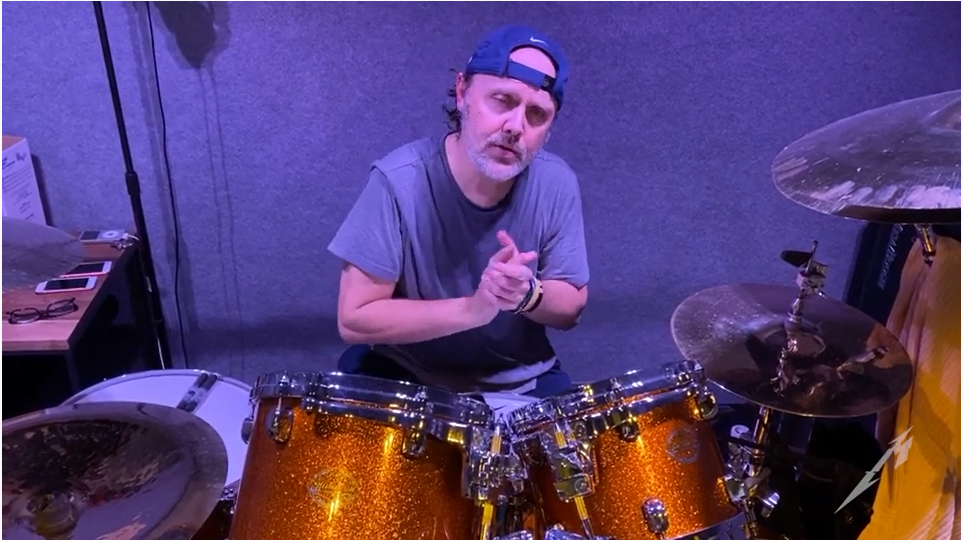 A few weeks ago, I wrote a post about how despite the isolation of COVID-19, online video chat tools have ushered in a “new intimacy.” It focused on Metallica’s Lars Ulrich who has opened a unique line of communications with the band’s millions of fans. We also talked about how Jimmy Fallon has been humanized during the pandemic, thanks to his precocious daughters who are now “co-starring” with “The Tonight Show” host.
A few weeks ago, I wrote a post about how despite the isolation of COVID-19, online video chat tools have ushered in a “new intimacy.” It focused on Metallica’s Lars Ulrich who has opened a unique line of communications with the band’s millions of fans. We also talked about how Jimmy Fallon has been humanized during the pandemic, thanks to his precocious daughters who are now “co-starring” with “The Tonight Show” host.
Now, every day, there are more and more of these moments. Whether it’s the Stones performing from all four of their homes, Post Malone and his band doing an amazing Nirvana tribute from his rec room, or the new intimacy of the NFL Draft, COVID-19 is changing how we are connecting with each other, as well as celebrities.
Here in Detroit, the Free Press’ Jeff Seidel wrote about his this new era of video chat showed us another side of Lions’ coach, Matt Patricia, as he participated in this event with his three little kids. We saw grumpy, crusty, grimacing Bill Belichick with his dog, Nike, on Nantucket – smiling. As Seidel points out, fans saw Cowboy’s owner Jerry Jones’ yacht, but also saw NFL Commissioner Roger Goodell hanging out in his study wearing a T-shirt.
The NFL would have never done this on their own. In any “normal” year, we would have seen the same scenes, the same Goodell hugs with draftees, and the same team “war rooms” we see year after year. Nothing new to see here. But thanks to a virus that impacts everyone from Mark Cuban to Tom Brady, we now get an intimate look at those we love, hate, cheer for, and boo at.
And the draft was a ratings winner, according to the AP. It averaged an impressive 8.2 million viewers over the three day event, compared to last year’s record 6.2 million. Yes, more people were home, available, and bored. But still….

This is the moment for personality radio to not only shine, but to connect in the new way we find ourselves hanging out with friends, family, and co-workers during the crisis. The ability to get even closer to the audience, even though we’re physically further away, is something radio should be exploring.
It doesn’t matter whether you play Hip-Hop or Classic Rock. Whether you’re all-news or sports radio. Or whether you’re the public radio station or the Christian music radio station in town.
It’s about welcoming an audience starved for something new, being real, and making listener connections through the magic of video chat.
It may turn out to be the new spring book promotion.
Welcome to “the new intimacy.”
- Media And Technology In 2025: Believe It Or Not! - April 18, 2025
- In Radio, You Just Never Know - April 17, 2025
- The Secret To Making A Great Podcast (And Great Radio) - April 16, 2025




Agreed.
This sounds like a great idea for multiple-person morning shows. What if, like we have where I work, all the shows are solo? And does it matter for people in the midday like me?
I don’t think you have to be an ensemble show for it to work. Dayparts jocks could go on with handfuls of listeners (off the air). Or several staffers could do a Q&A. I don’t think we’ve thought of the possibilities. Thanks for commenting, Don.
Thanks for answering back. I have an idea or two brewing in my head concerning how I can make this happen here.
Let me know how it works. Remember that if it’s off the air, you can record the session ahead of time and analyze whether it’s worthy of more exposure. Good luck!